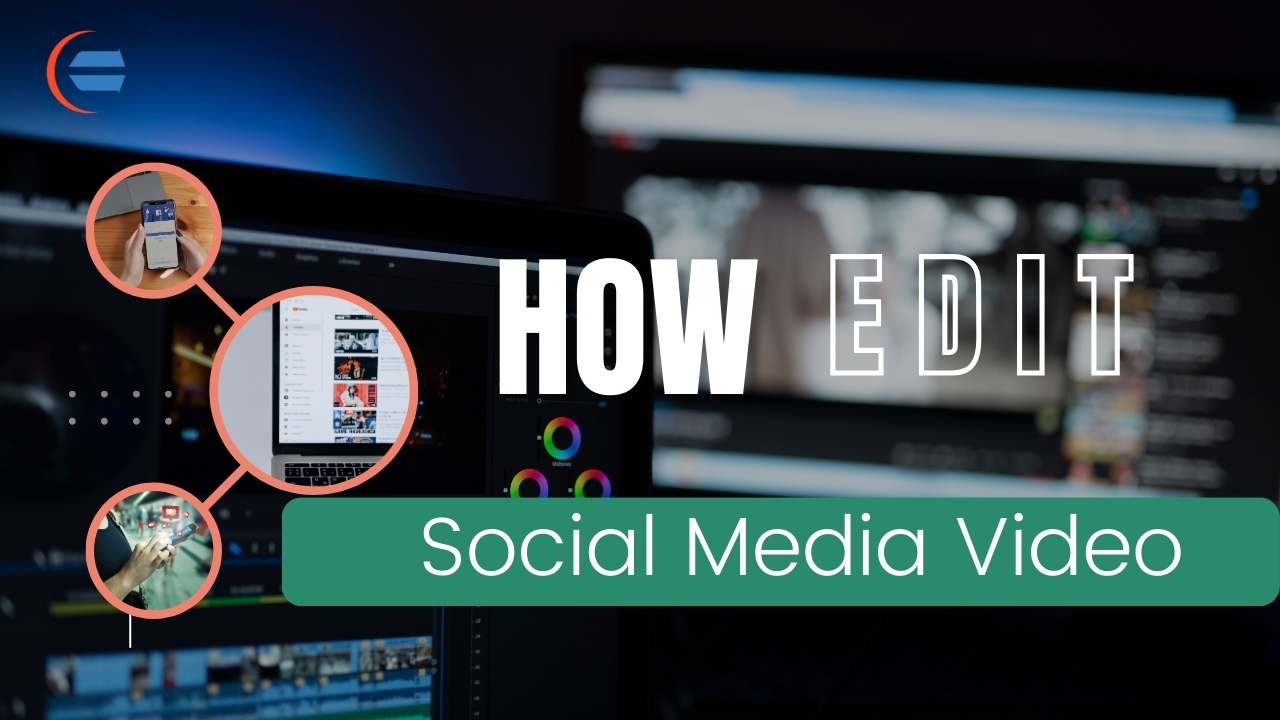Editing a social media video using software involves various steps, including importing footage, trimming, adding effects, enhancing audio, and exporting it for different platforms. Below, I’ll break down the detailed steps for editing a social media video using common video editing software like Adobe Premiere Pro, Final Cut Pro, or free tools like Capcut, Filmora, iMovie, and DaVinci Resolve.
1. Choosing the Right Video Editing Software
Depending on your needs, skill level, and budget, you can select from a variety of software:
- Free Options:
- iMovie (Mac users) – Basic, beginner-friendly video editing.
- DaVinci Resolve – Professional-grade with color correction tools, free version available.
- Shotcut – Free, open-source video editor with a wide range of features.
- Paid Options:
- Adobe Premiere Pro – Industry-standard with advanced tools for professionals.
- Final Cut Pro (Mac) – Powerful editing software with optimized workflow.
- Filmora – User-friendly and affordable.
2. Steps for Editing a Social Media Video
Step 1: Import the Video Footage
- Open the Software: Start your video editing software and create a new project.
- Set Project Settings: Set up your project to match the dimensions required for the social media platform (most social media videos are 1080×1080 for square, 1920×1080 for landscape, and 1080×1920 for portrait/vertical videos like TikTok or Instagram Stories).
- Aspect Ratios:
- 1:1 for Instagram Feed.
- 9:16 for TikTok, Instagram Stories/Reels, and YouTube Shorts.
- 16:9 for YouTube and Facebook.
- Aspect Ratios:
- Import Footage: Bring in the video clips, audio, images, and other assets that you’ll use. Most software will have an Import Media button or allow you to drag and drop files into the timeline or media bin.
Step 2: Organize and Trim Footage
- Timeline: Once your footage is in the timeline, arrange your clips in the desired order. Drag and drop clips onto the timeline to get a rough idea of the sequence.
- Cutting/Trimming: Use the blade or cut tool (typically available in the toolbar) to cut the video into segments. Remove unwanted sections or trim down the video to keep it concise and engaging (especially important for social media where attention spans are short).
- Snap Tool: Enable the snap tool to make sure cuts are aligned perfectly. This is helpful when joining different clips smoothly.
Step 3: Add Transitions and Effects
- Transitions: Add transitions between clips, like crossfades or jump cuts. Keep transitions simple for social media. Many platforms prefer quick cuts over fancy transitions.
- Common Transitions:
- Cut: Simple switch between clips.
- Dissolve Smooth transition between two clips.
- Wipe/Slide: One clip pushes the other out of the frame.
- Common Transitions:
- Effects: Apply basic video effects such as color grading, brightness adjustments, or blurs to enhance the visual appeal. Most editing software will have preset filters, or you can manually adjust contrast, saturation, and color.
- In Adobe Premiere Pro: Go to Effects > Lumetri Color to adjust color settings.
- In DaVinci Resolve: You can use Color Grading Panels to apply detailed color correction.
- Speed Adjustments: Slow-motion or fast-motion effects can create a dramatic or comedic impact. Most editing software lets you change the speed of clips via the Speed/Duration setting.
Step 4: Add Text, Titles, and Subtitles
- Text Overlays: Add text or titles to highlight key information. This can be a call to action, hashtags, or branding.
- In Premiere Pro: Use the Text Tool to type directly on the video or create a separate text layer.
- In Final Cut Pro: Use Titles and Generators from the Toolbar.
- In iMovie: Select Titles and drag them onto the timeline.
- Subtitles: Subtitles are important for videos on social media since many users watch without sound. You can manually add subtitles by creating text boxes for each line, or use auto-subtitle features (available in some software or third-party tools).
Step 5: Enhance Audio
- Add Background Music: Choose royalty-free music that fits the mood and tone of your video. Make sure the music level doesn’t overpower your narration or dialogue.
- Audio Effects: You can adjust the audio by using equalizers, applying audio transitions (fade in, fade out), and removing background noise if needed.
- In Premiere Pro: Go to Audio Effects > DeNoise to reduce unwanted sounds.
- In Final Cut Pro: Use the Audio Inspector to adjust the volume or apply audio enhancements.
- Sync Audio with Video: Ensure that any voiceovers or sound effects are perfectly synchronized with the video clips.

Step 6: Apply Filters and Color Correction
- Filters: Many editing tools come with preset filters that can give your video a specific look (e.g., vintage, black-and-white, or high-contrast styles).
- Manual Color Correction: Adjust exposure, contrast, white balance, and saturation for a polished look.
- DaVinci Resolve: Known for its advanced color grading features, ideal for achieving professional color results.
- Premiere Pro and Final Cut Pro: Both offer robust color correction tools like Curves and Basic Color Correction tools.
Step 7: Add Motion Graphics and Animations
- For videos on TikTok, Instagram Stories, or Facebook, adding simple animations or motion graphics can make your content more engaging.
- Premiere Pro: Use the Essential Graphics panel for pre-made motion graphics.
- After Effects: For more advanced users, you can create custom animations and motion graphics to add to your video.
- iMovie: Simple animations like “Ken Burns” effects can be applied to photos or videos.
Step 8: Final Review and Adjustments
- Playback: Preview your entire video to check for any mistakes, including cutting errors, audio sync issues, or unwanted sections.
- Adjust Aspect Ratio: Before exporting, double-check the aspect ratio and resolution settings based on the social media platform’s recommendations. Ensure that nothing is cut off or misaligned in the frame.
Step 9: Export the Video
- Once your video is edited, export it using the appropriate settings for the platform.
- Export Settings:
- MP4 or MOV formats are widely supported by social media platforms.
- For YouTube: Use 1920×1080 resolution, H.264 codec.
- For Instagram Stories/TikTok: Use 1080×1920 resolution.
- In Adobe Premiere Pro: Go to File > Export > Media, select the appropriate settings, and click Export.
- In Final Cut Pro: Go to File > Share > Master File or select a preset for YouTube, Facebook, etc.
- Export Settings:
Step 10: Upload to Social Media
Upload the video to your desired platform and ensure it fits perfectly into the feed or story format. Most platforms allow you to add additional settings, like captions, tags, hashtags, and thumbnails.
Best Practices for Social Media Videos:
- Keep it short: Attention spans on social media are short, so aim for concise content (15-60 seconds for TikTok and Instagram Reels).
- Use Captions: Many users watch videos without sound. Captions make your video accessible and engaging.
- Engage Early: Hook viewers in the first few seconds with eye-catching visuals or a strong message.
- Branding: Add your logo or watermark subtly to protect your content and build brand recognition.
Social media video editing is usually very easy, but some people need to brand their business, personal promotion, and other promotions and then they find a professional editor who can edit their video. Everyone should edit any social media video using some professional platform as it can help improve their editing skills.
Tags: editorspro editing, How To Edit A Social Media Video, social media edit, social media video, social media video agency, social media video edit, social media video platform, youtube short video edit, YouTube video make
